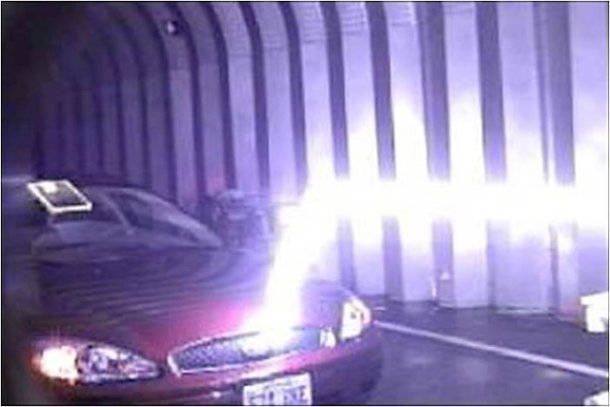 Picatinny Arsenal, an armament company specialized in both conventional and smart weapons is working on something that goes beyond kinetic-energy weapons, which is a fancy terms to describe “throwing stuff at the adversary”. In their own words, they seek to “harness the power of lightning” – quite ambitious if you ask me.
Picatinny Arsenal, an armament company specialized in both conventional and smart weapons is working on something that goes beyond kinetic-energy weapons, which is a fancy terms to describe “throwing stuff at the adversary”. In their own words, they seek to “harness the power of lightning” – quite ambitious if you ask me.
The end-game they say, is to be able to target anything that conducts electricity. To create lighting out of thin air, the company uses a very intense laser beam. Unlike “normal” weaponized lasers, the beam itself is not the weapon here. Instead the beam is so powerful and so focused that it can “rip electrons off of air molecules” says Picatinny. The mean then serves as a guiding mechanism for the energy to the target.
Of course, that’s the theory, and while it looks great on paper, the real-world progress has been slow but steady, as this is often the case for this type of research. It takes nearly 20 years to design and field a new fighter plane, so imagine doing this with something that has never been done before.
As always, the problem lies into creating and managing the energy required and sent by this device. The energy input/output can be huge (what a “city uses”, says Picatinny), and this is particularly difficult to build and maintain parts that will channel such power.
If this works, the lightning bolt can be directed towards a target and would self-guide itself in the last few yards or inches, provided that the target is a conductor. A normal laser beam cannot do that.
Although the Army does not describe in details what it intends to do with it, most energy-weapons are designed to intercept high-speed/high-value targets such as ballistic missiles, or even projectiles like artillery shells. At that speed, some final auto-guidance to the target at the speed of light can mean the difference between a miss or a loss, and this is no small game if the incoming projectile is a nuclear warhead. For more information, check Picatinny’s page on the subject.